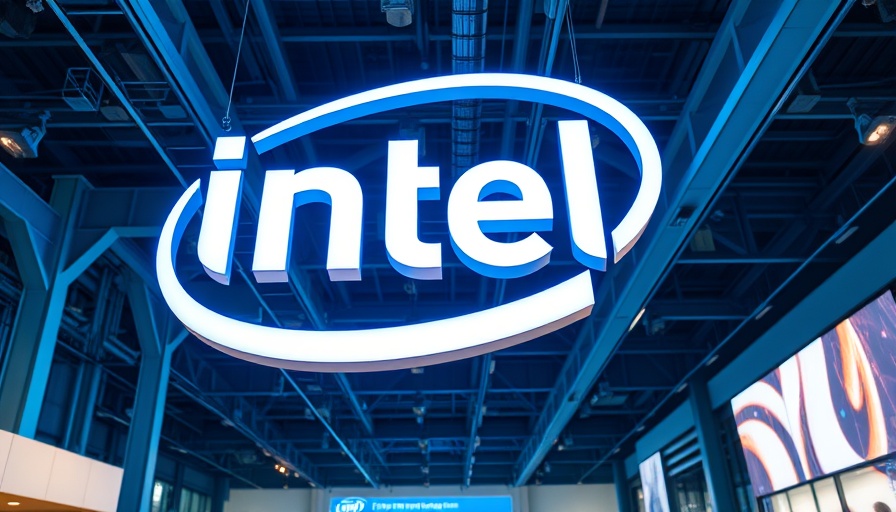
Intel's Strategic Retreat: Navigating Industry Challenges
In an ambitious yet cautious maneuver, Intel is recalibrating its manufacturing strategy under the guidance of CEO Lip-Bu Tan. Following a second-quarter earnings report that showed an unexpected delay in several pivotal projects, the semiconductor leader is prioritizing efficiency over expansion.
Recently, Intel disclosed that it will no longer pursue its manufacturing endeavors in Germany and Poland, including plans for a chip factory and an assembly facility. Both projects had been on hold since last year, reflecting a broader theme of resilience as the company confronts overcapacity and weakened demand that has plagued the semiconductor industry.
Understanding the Shift in Strategy
During the earnings call, Tan candidly acknowledged that prior capacity investments were "well ahead of demand and were unwise and excessive." This approach marks a notable shift from Intel's previous expansionist mindset to a more measured, demand-driven strategy. The consolidation of test operations in Costa Rica will further help streamline the company’s operational footprint in favor of its facilities in Vietnam and Malaysia.
"Our factory footprint has become needlessly fragmented," Tan explained, emphasizing the need for accountability and a streamlined organization. This consolidation reflects not only a response to current market conditions but is also a reflection of Intel’s commitment to responsible governance within a challenging tech landscape, where capacity must align with tangible volume commitments.
Delayed Ambitions: The Ohio Chip Factory
Among the postponed projects is the highly anticipated $28 billion chip factory in Ohio. Initially expected to commence operations in 2025, this project has faced multiple delays, including a prior postponement in February. The implications of these setbacks resonate throughout the tech community, highlighting not just Intel's internal struggles but the broader, ongoing volatility in the global semiconductor market.
As chips continue to serve as the backbone of modern technology, the strategic decisions made by industry giants like Intel are critical indicators of future trends. Analysts predict that as companies recalibrate their strategies, there may be broader implications for supply chains and technology innovations.
A Look Ahead: The Future of Intel's Manufacturing
Looking forward, Intel's strategy suggests a focus on flexibility and readiness to pivot as market demands fluctuate. The semiconductor industry is currently at a crossroads, grappling with recovery from supply chain disruptions exacerbated by the COVID-19 pandemic and shifting geopolitical factors.
As Tan continues his work to clean up operations and enhance accountability, the next few quarters will prove crucial for Intel to reaffirm its position at the top of the semiconductor manufacturing hierarchy. A well-executed transition could mean the difference between a re-energized enterprise or a prolonged period of struggle.
The Bigger Picture: Market Impact and Industry Trends
Beyond Intel's immediate future, the implications of these changes could vastly affect the entire tech landscape. With numerous manufacturers cautiously assessing their output capabilities, tech news trends are shifting toward a more measured analysis of growth potential.
Observers should monitor how Intel's competitive landscape evolves as other tech giants adapt to similar challenges. The ripple effects could lead to reduced innovation speed as companies allocate resources more conservatively, prioritizing steady growth over rapid expansion — a reflection of the global economic climate.
The Takeaway: What Intel’s Changes Mean for Tech Enthusiasts
As Intel wrestles with internal efficiencies and the quest for innovation, tech enthusiasts and investors alike should stay attuned to these developments. Understanding these shifts doesn’t just inform purchasing decisions; it also shapes expectations for future tech innovations and trends.
In a world dominated by ever-evolving technology, keeping a pulse on these changes can provide valuable insights into how the landscape is continuously reshaping itself.
While these strategic moves reveal Intel's commitment to efficiency, they also evoke a sense of caution for the tech industry at large. As the market recalibrates, the trickle-down effects can shape everything from consumer technology to investment opportunities in the tech sector.
 Add Row
Add Row  Add
Add 



Write A Comment